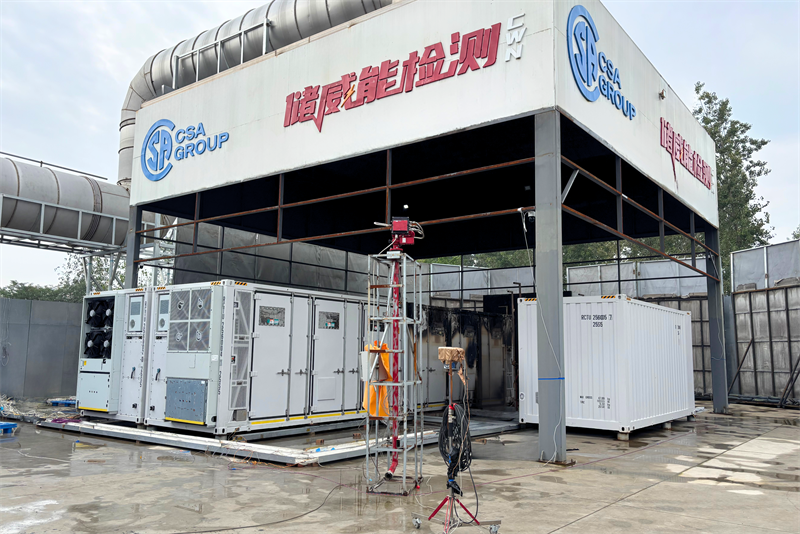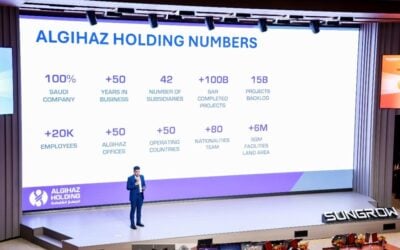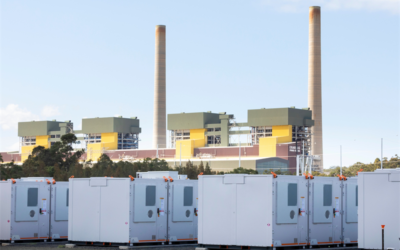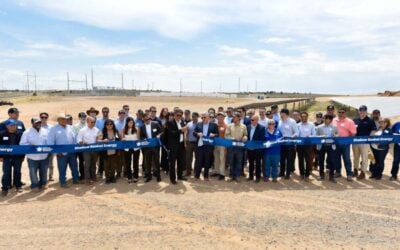
Battery storage products from prominent international providers Sungrow, Wärtsilä and Chint Power have undergone recent fire safety tests.
These are the latest in a long line of announcements from battery storage companies. Technology providers are seeking to meet both new and existing standards for safety and proactively mitigate risks and address stakeholder concerns.
Sungrow: ‘Industry first’ residential Large-Scale Fire Testing
A home battery solution from Sungrow has become the first in the industry to be put through the UL9540B Large-Scale Fire Testing (LSFT) procedure.
China-headquartered solar PV inverter and battery energy storage system (BESS) manufacturer Sungrow announced the completion of testing yesterday (27 November).
Try Premium for just $1
- Full premium access for the first month at only $1
- Converts to an annual rate after 30 days unless cancelled
- Cancel anytime during the trial period
Premium Benefits
- Expert industry analysis and interviews
- Digital access to PV Tech Power journal
- Exclusive event discounts
Or get the full Premium subscription right away
Or continue reading this article for free
UL Solutions conducted the testing on Sungrow’s SBH Series: Residential ESS, subjecting a unit to forced battery cell thermal runaway and assessing the outcome. During testing, fire suppression systems are deactivated to simulate worst-case scenarios in real-world conditions.
These scenarios include the potential buildup of flammable gases and external ignition. The tests evaluate how effectively a system’s design and materials prevent the spread of fire, explosions and other secondary risks.
Sungrow said the modular, stackable SBH Series unit, available in 10kWh increments, contained fire spread, with internal surface temperatures of adjacent units recorded at 21°C, which is below the 154°C venting threshold. Open flames self-extinguished an hour after ignition without fire suppression intervening and with no re-ignition.
There were no combustion, explosion or projectile hazard events and the cabinet set on fire remained intact.
UL9540B is a new standard developed by the certification and standards agency UL. It is specifically aimed at residential energy storage systems of 20kWh capacity or less. It comprises two tests at cell level and for fire propagation, unlike the more established UL950A thermal runaway propagation test for larger systems that includes cell, module and unit-level tests.
“The output of UL 9540B is a single test report that evaluates the fire propagation of an electrochemical ESS and its thermal impact to the surrounding exposures,” according to a UL FAQ page on the test procedure.
UL said that the new residential tests were created as manufacturers relying on UL9540A test reports were informed of the need for LSFT data from authorities having jurisdiction (AHJs). AHJs said that the UL950A test series alone does not fulfil the requirements of the 2022 California Fire Code, for example.
While UL9540A remains a critical safety standard, is referenced in the National Fire Protection Association (NFPA) standard NFPA 855 for ESS safety and UL9540A cell test data can be used for UL9540B, UL plans for the new residential tests also to form a consensus-based standard like its older counterpart.
Wärtsilä ups ante on safety tests
Along with utility-scale market segment rival system integrators such as Fluence, Hithium, Canadian Solar, Trina Storage and many others, including Sungrow, Wärtsilä has been among the companies announcing LSFT and other fire test results over the past couple of years or so.
The energy storage and optimisation arm of Finnish marine and engine power plant tech company Wartsila has been particularly vocal in advocating for tests that push systems and components to their limits and mimic real fire situations as closely as possible.
This includes contributed articles and participation in interviews with Energy-Storage.news and ESN Premium on a range of related topics.
In its latest announcement earlier this month (17 November), Wärtsilä’s 5MWh BESS solution, Quantum 3, was revealed to have undergone UL9540A unit-level testing, LSFT, testing of the technology provider’s proprietary Active Ignition Mitigation System (AIMS).
Tests were carried out by the standards agency CSA Group, which has been behind the development of LSFT procedures that will be mandatory under the new 2026 edition of NFPA 855. CSA Group experts took part in a sponsored webinar with Energy-Storage.news in late 2024 to discuss LSFT, including requirements, methodology and purpose.
Wärtsilä said that in UL9540A thermal runaway propagation testing, Quantum 3 demonstrated that in the event of thermal runaway in a battery cell, fire would not spread to adjacent battery modules or BESS enclosures.
This meant Quantum 3 met all necessary performance requirements, the company said. However, it should be noted that from a standards perspective, UL9540A is not technically a pass/fail criteria test, but instead allows stakeholders to evaluate objective test data.
In Large-Scale Fire Testing, conducted in compliance with the CSA/ANSI C800:25 test procedure, a Quantum 3 unit burned for 22 hours with fire suppression equipment deactivated. The fire was contained within the initiated unit without propagation.
Meanwhile, testing provided validation for Wärtsilä’s proprietary AIMS, a feature that ignites flammable gases to prevent buildup in a thermal event’s early stages.
A couple of months ago, the company conducted testing on the AIMS within Quantum 2, an earlier iteration of Wärtsilä’s Gridsolv Quantum BESS product range. At the time, Wärtsilä Energy Storage president and Wärtsilä executive VP Tamara de Gruyter claimed it as a “first-of-its-kind” test for the industry with flammable gases intentionally released inside a BESS enclosure.
C&I system test from Chint Power Systems
Finally, a couple of days ago, China-headquartered solar PV solutions provider Chint Power Systems (CPS), posted to LinkedIn that LSFT was recently conducted on its commercial and industrial (C&I) energy storage system in Suzhou, China.
Testing was carried out in accordance with the CSA 800 procedure and the UL9540A draft that includes LSFT. Although CPS did not say whether a third-party standards agency was directly involved in the testing itself in the short post, fire marshal and fire protection engineer Todd LaBerge who took part featured in an accompanying video.
CPS arranged four cabinets with one initiating cabinet, two target cabinets on either side and a cabinet across an aisle, designed to simulate the configuration of a real-world installation. Cells and modules in the initiating cabinet were sent into thermal runaway and ignited using a propane burner.
After active ignition of battery equipment at 1:09pm local time, the fire reached peak intensity between 1:25pm and 2:20pm and was burned out and extinguished by 4:02pm.
No cell venting or thermal runaway or fire occurred in the target cabinet, where internal temperature stayed below the venting threshold, CPS claimed. There was “some slight exterior damage” to the adjacent cabinets, which CPS engineer Todd LaBerge said was “normal”.
CPS deputy general manager Allen Xiang said the C&I cabinet is installed close to personnel and property at customer sites, making the need for rigorous safety testing especially critical.





